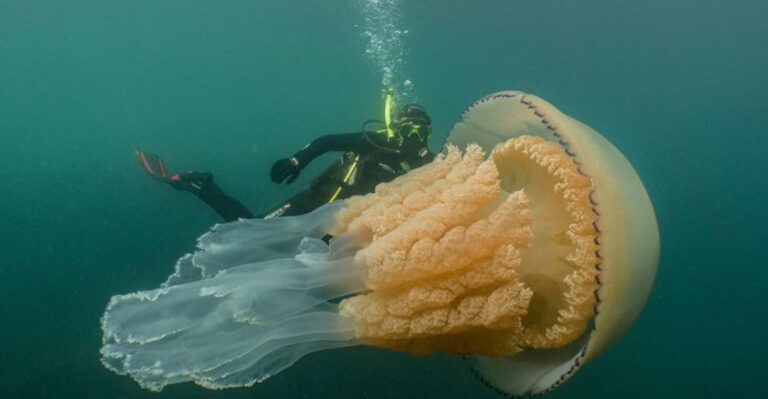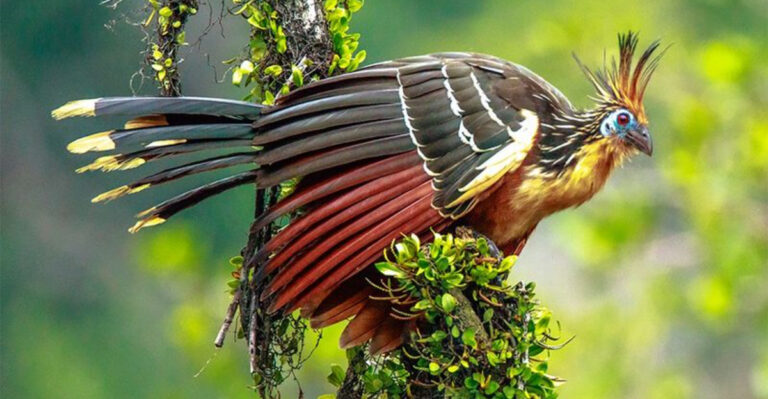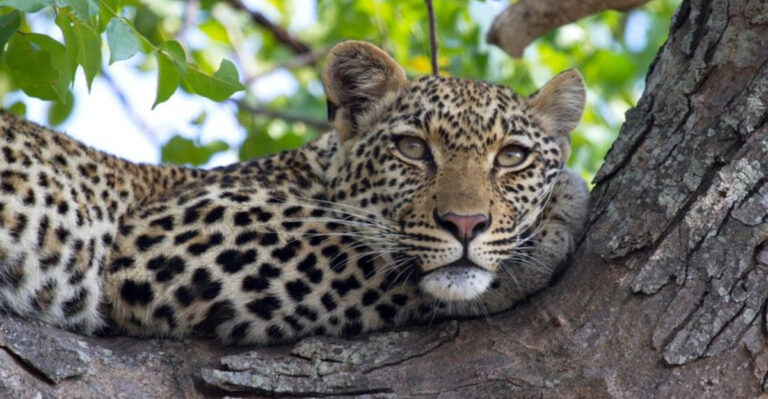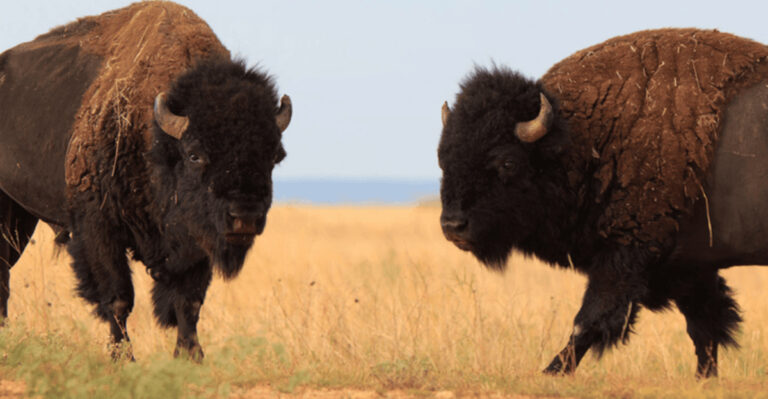How To Identify A Wood Duck In The Wild
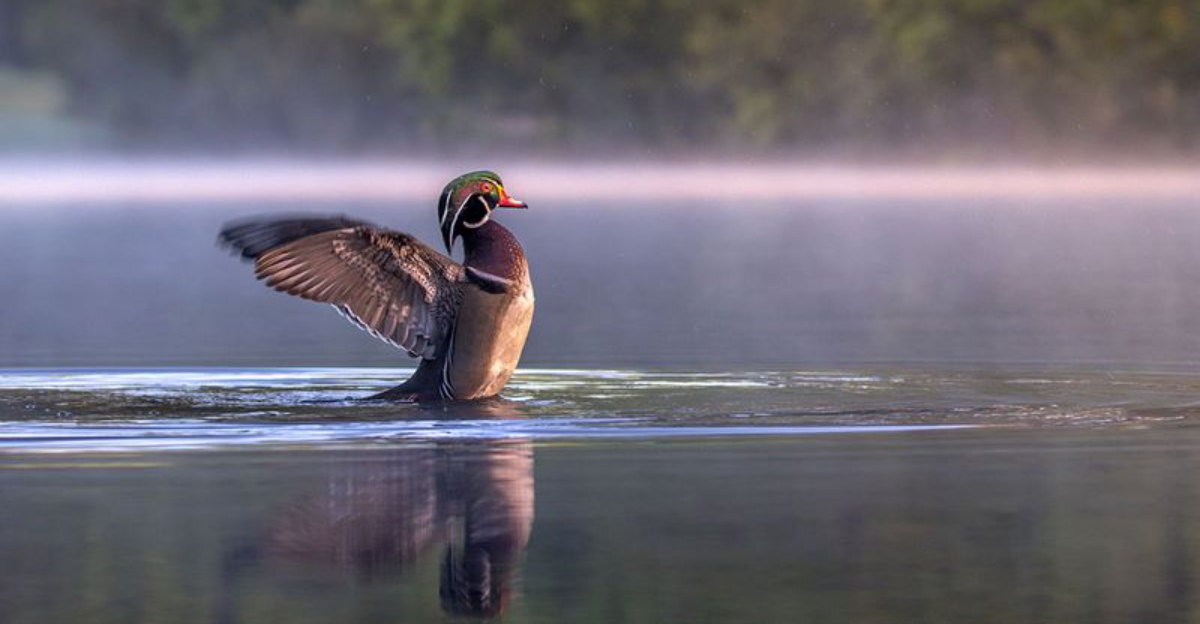
Wood ducks are among North America’s most beautiful waterfowl, but spotting them requires a trained eye.
These colorful birds often hide in wooded wetlands, making identification a fun challenge for birdwatchers. Whether you’re a beginner or experienced birder, knowing these distinctive features will help you spot these magnificent creatures on your next outdoor adventure.
Look For The Distinctive Plumage
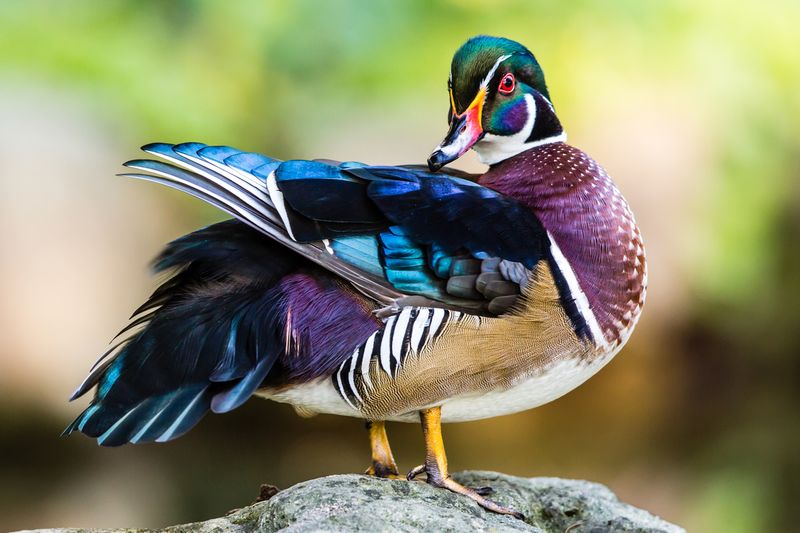
Male wood ducks sport a painter’s palette of colors – iridescent greens, purples, and blues that shimmer in sunlight. Their chestnut breast and crisp white markings create an unmistakable pattern.
Females, while less flashy, have their own beauty with muted brown feathers and a distinctive white teardrop around each eye. This eye-ring is a telltale sign even when colors are hard to see.
Notice The Unique Crest On The Head
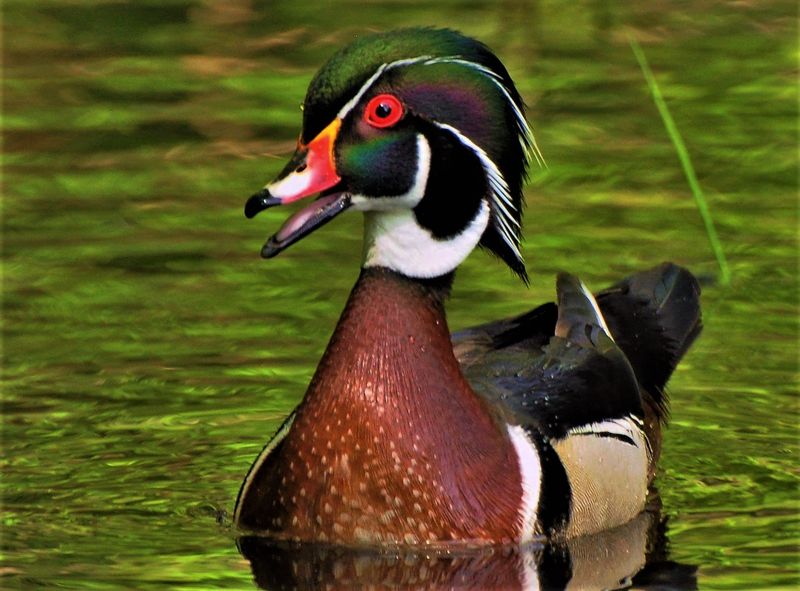
That sleek, swept-back crest is a wood duck’s crown jewel. Males display a dramatic green and purple crest that falls elegantly down the nape of their neck, especially when excited or during courtship.
Even females sport a smaller version of this distinctive feature. When alarmed, they’ll raise this crest, making their silhouette instantly recognizable among other duck species.
Check The White Throat And Chin

Crisp white patches adorn the throat and chin of wood ducks, creating striking contrast against their colorful heads. This bright bib extends upward toward their cheeks in clean, sharp lines.
Watch for this feature when ducks are swimming – it’s visible even at distance. The white areas seem to glow, especially in early morning or evening light when other features might be harder to distinguish.
Examine The Bright Red Eyes
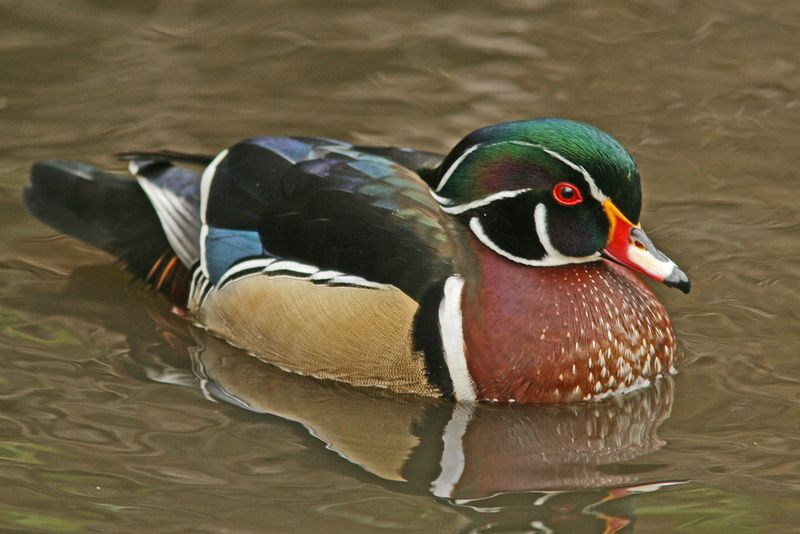
Ruby red eyes peer out from the wood duck’s colorful face – a feature that practically glows against their dark head feathers. This vibrant eye color is present in both males and females throughout the year.
Through binoculars, these scarlet eyes are often the first feature that jumps out. No other North American duck sports such brilliantly colored eyes combined with their distinctive plumage patterns.
Observe The Long, Broad Tail

Wood ducks boast a squared-off tail that extends noticeably when swimming, creating a distinctive silhouette unlike other puddle ducks. Males sometimes cock this tail upward during courtship displays.
When flying, their broad tail serves as a rudder, helping them navigate through wooded areas with remarkable agility. This feature is especially visible when they’re coming in for a landing on water.
Look For The Unique Bill Shape
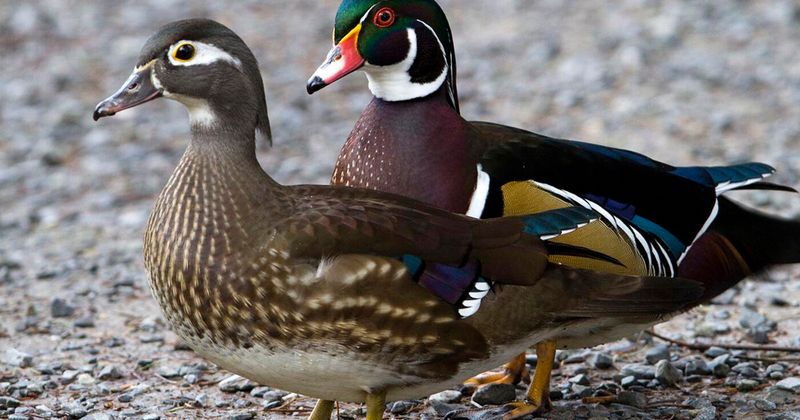
Unlike the typical rounded duck bill, wood ducks sport a slender, slightly downturned bill with a distinct nail at the tip. Males showcase a striking red-orange bill with a yellow base and black nail.
Females have a darker, more subdued bill coloration. The overall shape is narrow and tapered – perfectly adapted for their diet of seeds, acorns, and insects found in wooded wetlands.
Pay Attention To Their Perch

Spot a duck perched on a tree branch? You’ve likely found a wood duck! These remarkable birds have specialized claws that allow them to grip branches – a rare trait among waterfowl.
They’re perfectly at home in trees, often nesting in natural cavities or nest boxes placed high above ground. Watching them perch awkwardly yet confidently on branches is a delightful sight and definitive identification clue.
Listen For Their Call
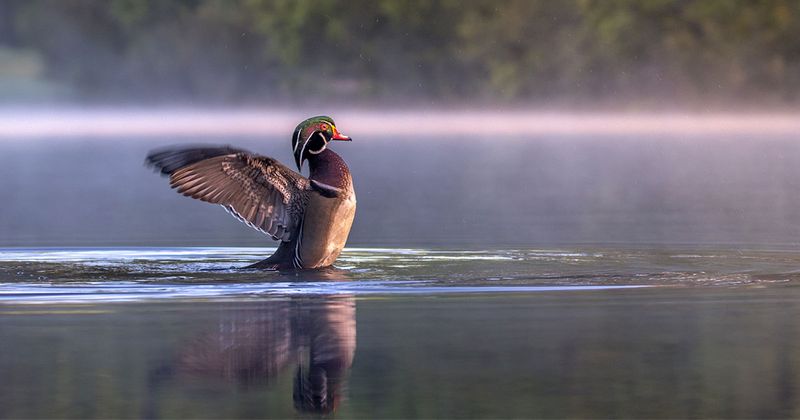
The female’s loud, distinctive “oo-eek, oo-eek” call echoes through wooded swamps – a sound unlike any other duck. Males produce a softer, squealing “jeeeeee” that rises slightly in pitch.
Dawn and dusk are prime times to hear these vocalizations. Their calls are surprisingly high-pitched for waterfowl, sounding more like a small bird than what most people expect from a duck.
Identify Their Flight Pattern

Wood ducks zip through forests with remarkable speed and agility, their wings creating a whistling sound as they weave between trees. Their flight appears almost erratic – quick wingbeats followed by short glides.
When startled, they burst upward nearly vertically from water. Watch for their distinctive silhouette in flight: neck extended, head held high, with that characteristic broad tail serving as a rudder.
Check The Habitat
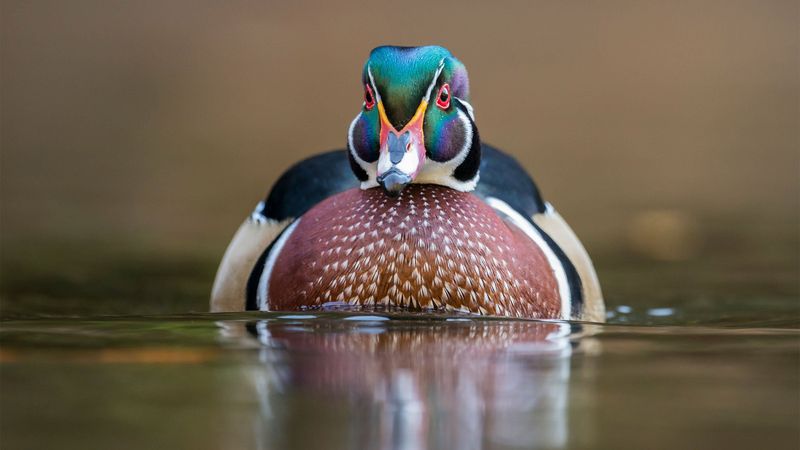
Wood ducks prefer secluded, shallow waters surrounded by trees – think wooded swamps, forested ponds, and slow-moving streams with overhanging branches. They avoid open water favored by other duck species.
Look for them where water meets woods, especially near mature trees with nesting cavities. Their perfect habitat includes both aquatic feeding areas and dense cover, making forest-edged waterways prime spotting locations.
Look For The Colorful Female
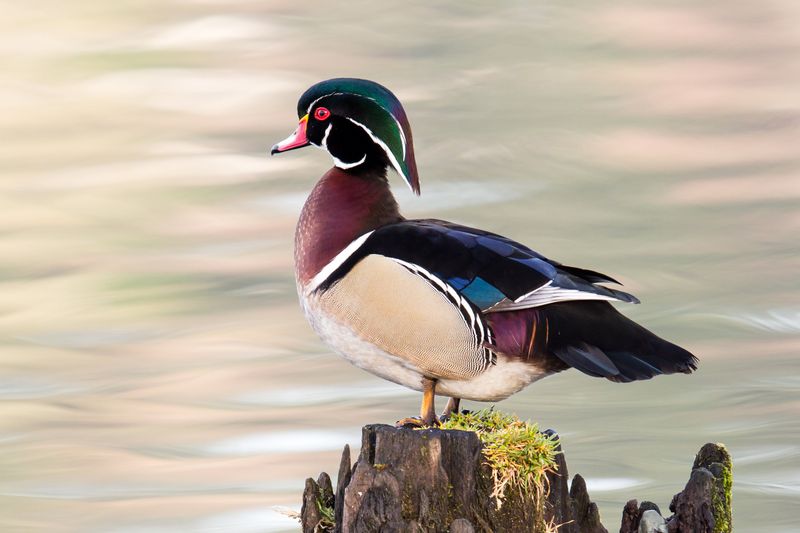
Female wood ducks break the “drab hen” rule with their subtle beauty. Their gray-brown bodies feature iridescent purple-green wing patches and that distinctive white eye-ring resembling delicate glasses.
The female’s elegant, sloping profile and crested head make her stand out among other female ducks. While not as flashy as males, their refined beauty and distinctive white teardrop eye pattern make identification straightforward even for beginners.

